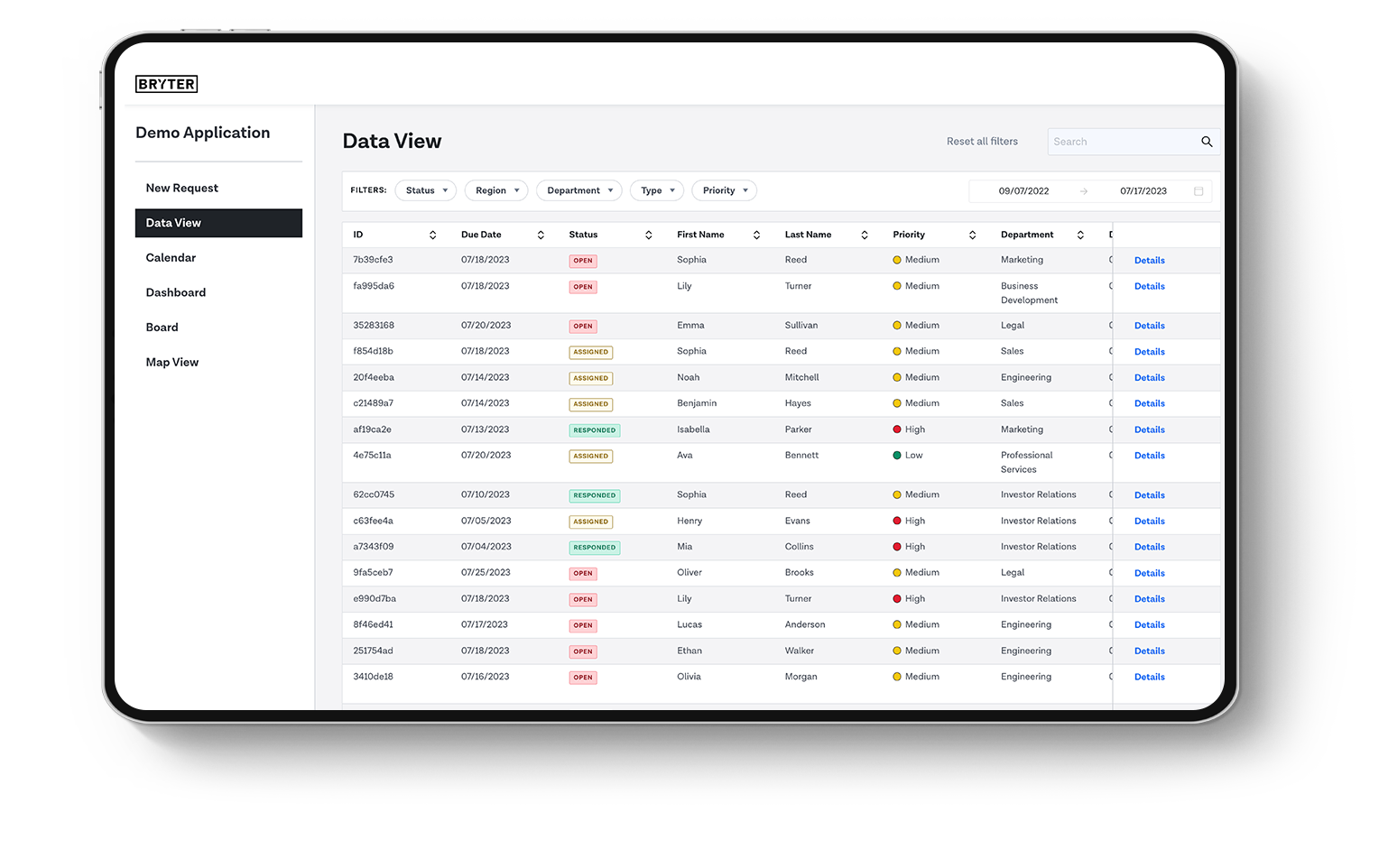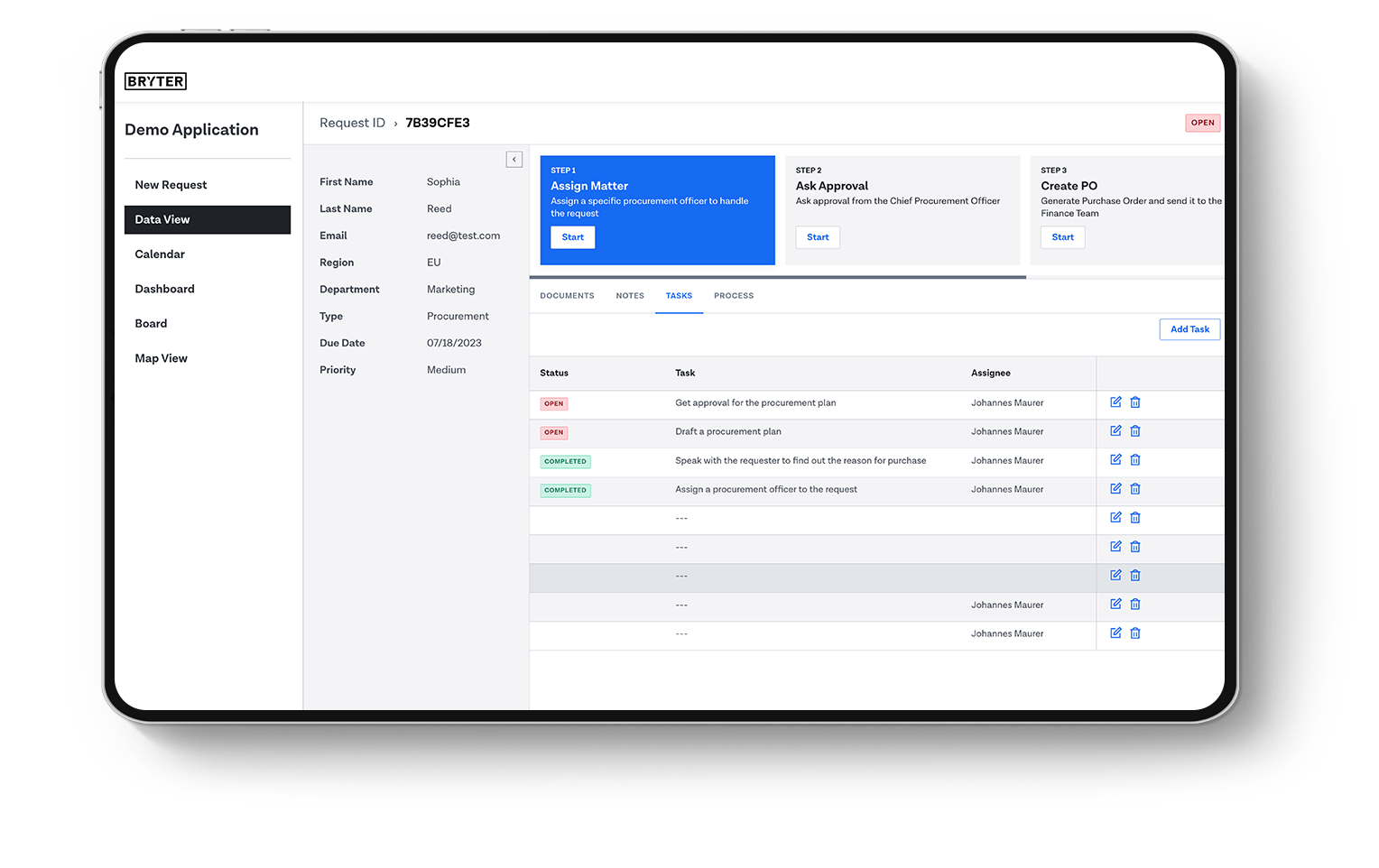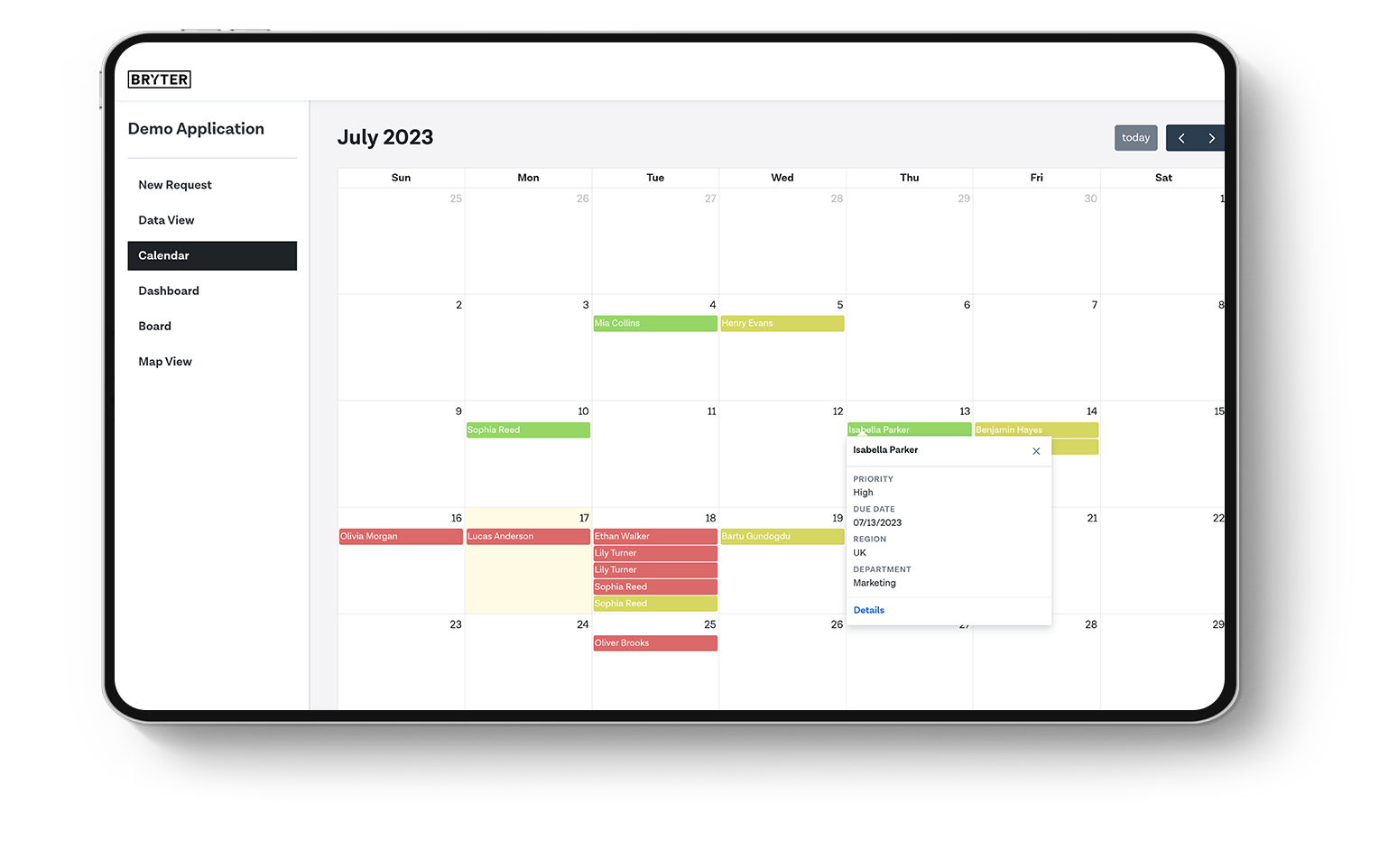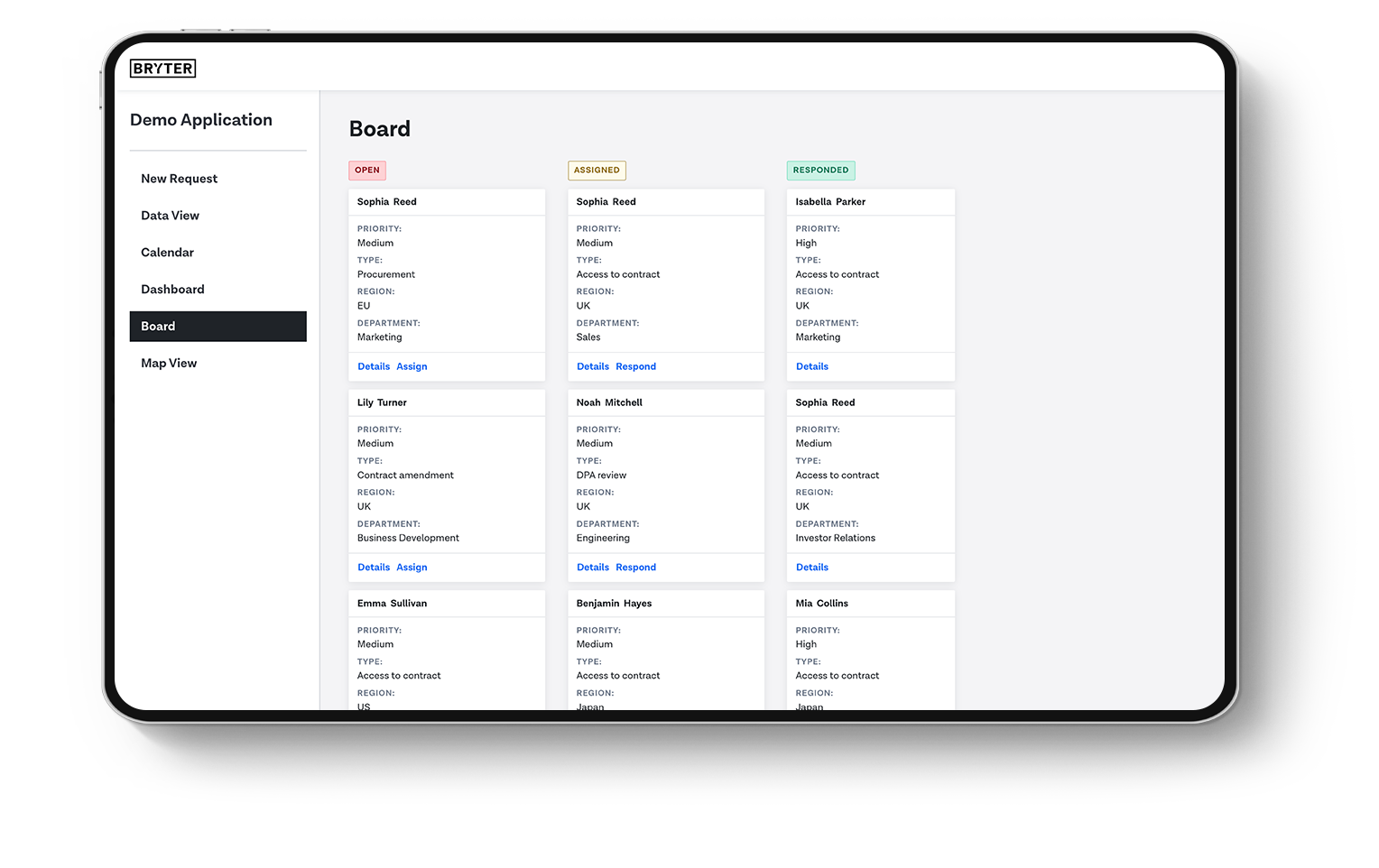Leverage the power of WordPress, the world’s most widely used website building framework, in your BRYTER Applications
We are excited to announce that our customers can now customize their BRYTER applications even further with the BRYTER WordPress Plug-in: a configurable set of no-code components.
Using our APIs via BRYTER Connect, our WordPress Plug-in seamlessly and safely integrates with the BRYTER Platform. The WordPress Plugin’s frontend components can be stacked into and/or chained after another, thereby creating feature-rich end user interfaces within BRYTER Applications.
BRYTER Modules can be linked from and/or embedded into any frontend components, so any further actions can be directly initiated from there.
What you get with BRYTER’s WordPress Plug-in
Data View
Similar to BRYTER’s built-in Data View, this component lets you display data in a table-like format. It comes with additional features such as a search bar, a date filter and further options for customization.

Details View
This component allows you to display the data of a single database entry in greater detail. It can be combined with other components, such as a nested Data View, which allows you to visualize relational data.

Dashboard
Visualize data using any combination of our pre-built charts (e.g. bar, line, stacked area, pie, doughnut chart and many more).

Stepper
Display all required actions of a business process along with the required action to be taken. This can be especially useful for onboarding and approval processes, where the right order of steps matters.

Map View
Provide information for each respective country/state on an interactive map. Supported maps include World, US states, European Union, EEA and EFTA.

Process Map
With this component, you can interactively visualize the business process of your BRYTER Application, thereby giving users transparency and allowing them to pick up the relevant next steps.

Calendar
Visualize database entries as calendar items containing all relevant data – this can be useful for keeping track of deadlines and the status of requests.

Board
This kanban-style component allows you to display database entries in different columns (e.g. for different statuses of a request’s lifecycle).












